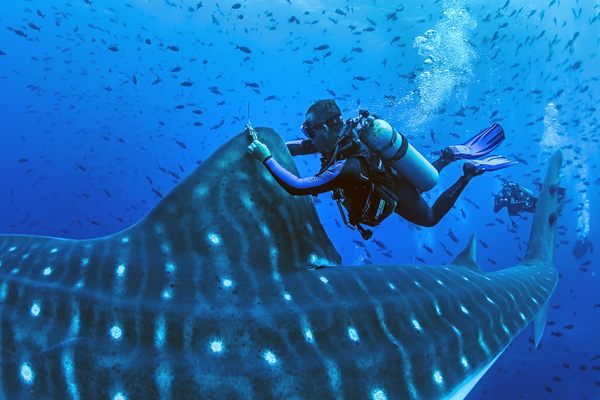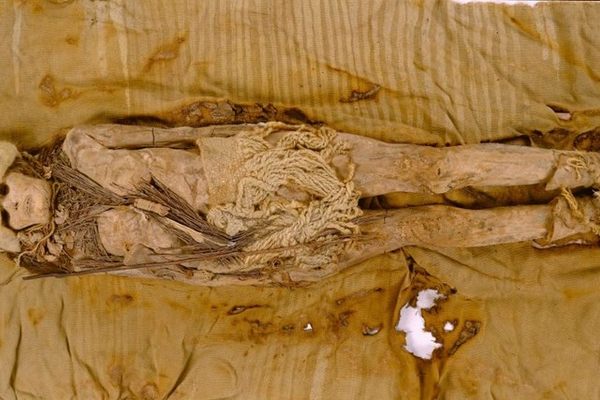Sand Tiger Sharks Are Drawn to North Carolina’s Shipwrecks
They return to the same sunken vessels over and over again, and researchers are trying to figure out why.

Off the North Carolina coast, the rusty coral-ridden hollows of sunken vessels have become an important habitat for a certain underwater predator, one who can’t seem to get enough of the camera. Underwater photos dating back to 2007 revealed that six female sand tiger sharks had returned to the same shipwrecks months and sometimes even more than five years apart, according to new research published in the journal Ecology.
This phenomenon, when an animal returns to a habitat with some regularity, is known as site fidelity. The discovery may prove invaluable for scientists attempting to understand the conservation status of sand tiger sharks, categorized by the International Union for Conservation of Nature as a globally vulnerable species.
Current sand tiger shark population numbers are unknown as the last IUCN assessment was conducted in 2005. According to a press release, it is believed that their numbers have been spiraling downward since the early 1990s. The discovery of these sunken habitats could help scientists understand where to monitor for sand tiger sharks.
“Our finding that female sand tiger sharks return to the same or nearby shipwrecks adds to a growing body of evidence that these wrecks are very special and important habitats for a diversity of marine life, including top predators like the sand tiger shark,” says Avery B. Paxton, a marine ecologist and lead author of the study, via email. The coast of North Carolina’s Outer Banks is often referred to as the “Graveyard of the Atlantic,” due to the shipwrecks that populate the waters. This salty cemetery could now become a prime location to study the vulnerable species—and take more photos.

A set of images, which were taken by scuba divers, were crucial to the team’s research. The photographs allowed researchers to identify individual sharks through their unique spot patterns and to fully understand who was returning, when, and how often. By uploading photos to citizen scientist databases, such as the Spot A Shark USA program led by the North Carolina Aquariums, divers can provide researchers with the opportunity to study an ecosystem without having to venture out the lab.
It’s not yet known why female sand tiger sharks haunt the submerged ships. It’s also unknown if males exhibit similar behavior as none were found in matching photos. “Further research will better determine how valuable these shipwrecks are,” says Hap Fatzinger, co-author of the study. “We feel they are providing a critical habitat for this species to rest from long seasonal migrations, provide opportunities for overwintering, and also create an oasis for mating and reproduction.”



















Follow us on Twitter to get the latest on the world's hidden wonders.
Like us on Facebook to get the latest on the world's hidden wonders.
Follow us on Twitter Like us on Facebook